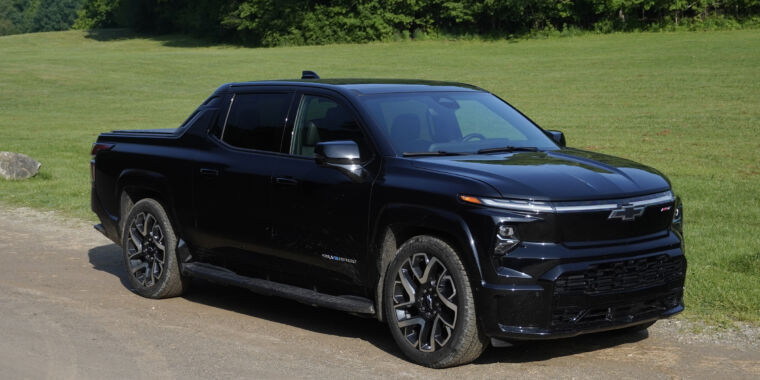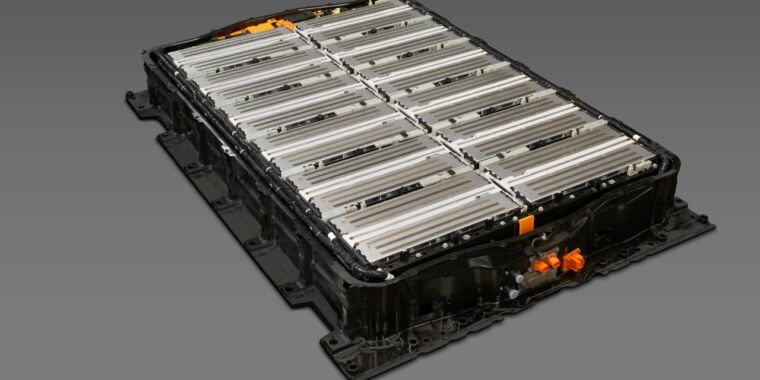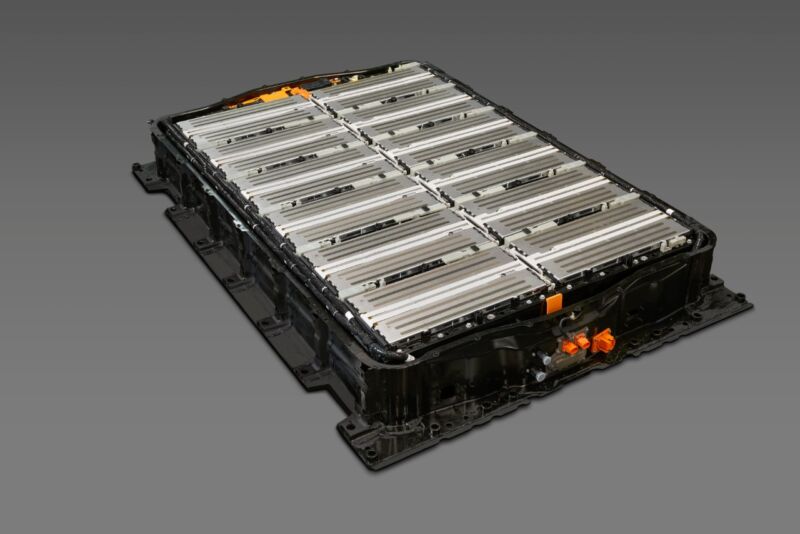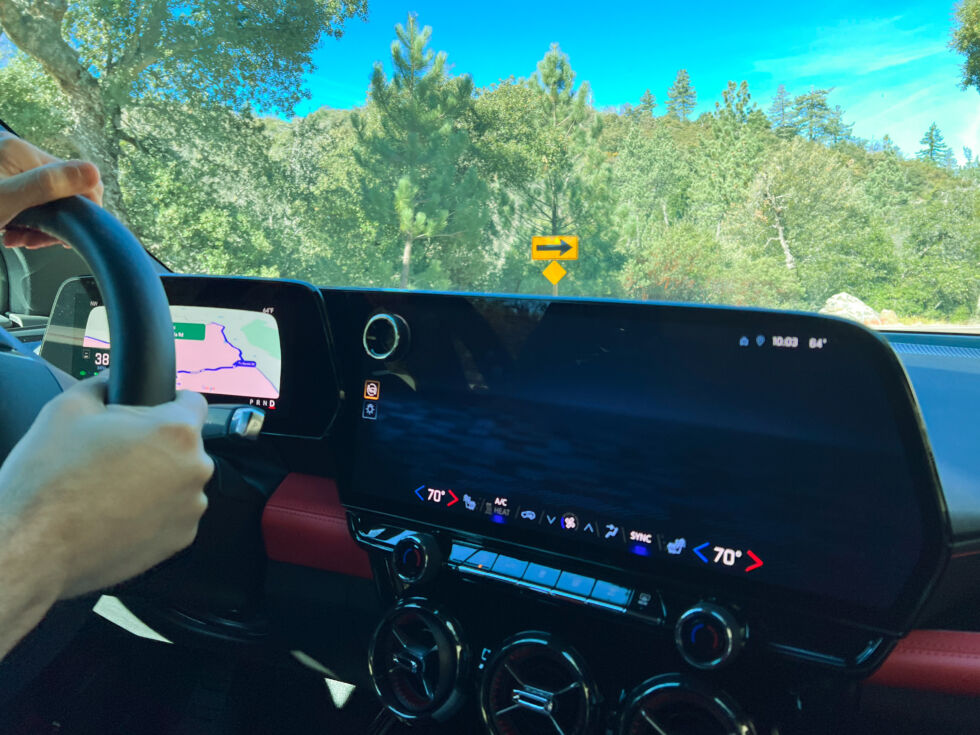The 2024 Chevrolet Silverado EV’s great range comes at a high cost
if you hate big trucks, look away now —
At $94,500, the Chevrolet Silverado RST First Edition offers diminishing returns.
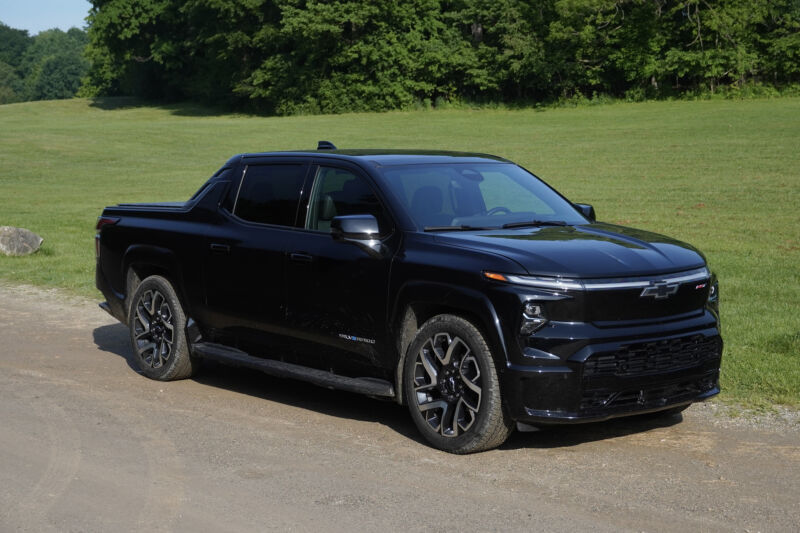
Enlarge / Chevrolet is starting at the top with the Silverado EV RST First Edition. It’s betting that EV truck buyers want a lot of range and towing capability and will pay handsomely for the experience.
Michael Teo Van Runkle
The latest addition to Chevrolet’s growing family of Ultium electric vehicles recently began shipping to dealers in the form of the Silverado EV’s early RST First Edition package. Silverado’s top spec level now joins the lineup’s previous fleet-only WT trim, meaning the general public can now purchase an enormous electric pickup that strongly resembles the Avalanche of 2001 to 2013. But despite any other similarities to the Hummer EV, which shares a related chassis, or ICE trucks of old, the 2024 Silverado aims to change the game for GM’s market positioning despite arriving a full 24 months after Ford’s F-150 Lightning.
With a large crew cab, a longer truck bed, and angular sail panels, the Silverado EV looks less boxy than GMC’s Hummer EV. Aero gains thanks to the smoother design pair with lower rolling-resistance tires, allowing the Silverado to achieve an EPA range estimate of up to 450 miles (724 km), though the RST First Edition I recently drove over the course of a long day in Michigan earns a rating of 440 miles (708 km).
On the highway, judging by wind noise around the cabin alone, the aerodynamic gains of the Silverado’s styling seem to make a noticeable difference versus the Hummer. On the other hand, tire hum might cover up any aero deficiencies because the RST’s single weirdest detail constantly occupies center stage here: a set of 24-inch wheels, the largest ever equipped to a car, truck, or SUV straight from the factory.
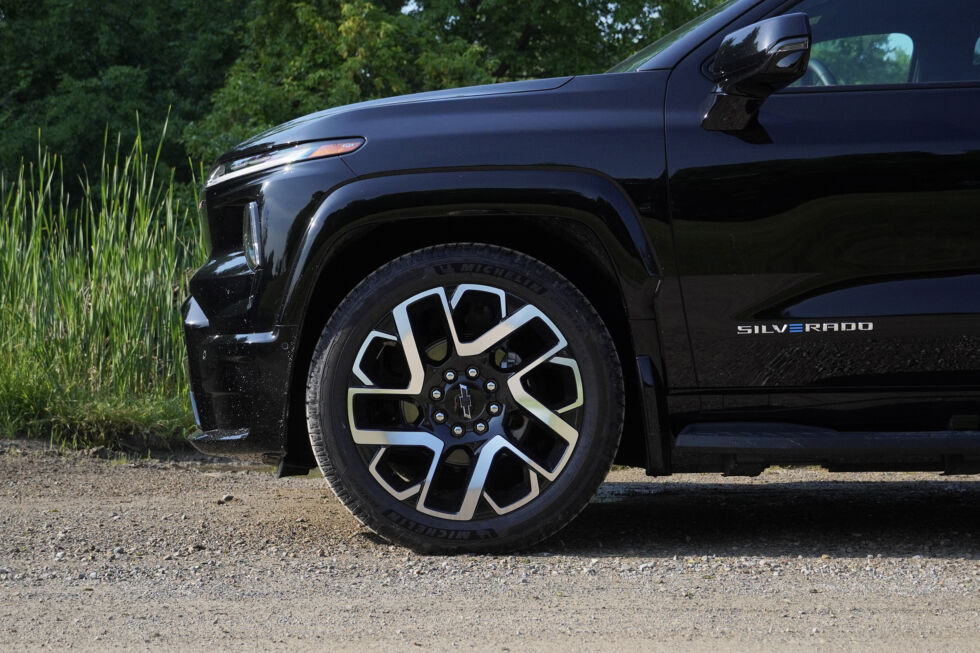
Enlarge / At 24 inches, the Silverado RST rides on simply gargantuan wheels. While it means acceptable towing performance, it comes with quite a hit to the ride.
Michael Teo Van Runkle
Shod in low-profile Michelin Primacy LTX tires pumped up to 61 and 68 PSI front and rear, which simultaneously maximizes range and load rating, the large wheels and minimal sidewall clearly stress much of the new truck’s suspension and ability to filter out noise, vibration, and harshness. Even in town, on the first few blocks of Detroit’s rough roads, the setup immediately challenged the Silverado EV’s adaptive air suspension, which otherwise worked surprisingly well on the mammoth Hummer.
But the Hummer EV I drove rode on 18-inch wheels, despite the similar 35-inch overall tire diameter. The much more compliant ride quality therefore creates a conundrum, since GM clearly intends for the Silverado to represent a much more rational and capable vision for electric performance in the full-size pickup truck market.
Specifically, the Silverado adds a longer bed, a Multi-Flex tailgate, and a central mid-gate (also à la Avalanche) to provide far more payload volume than the Hummer, as well as that of Silverado’s main electric competition, the F-150 Lightning, Rivian R1T, and Tesla Cybertruck. But the mid-gate required far more rugged materials for the Silverado’s interior to enhance weatherproofing, so even the top-spec RST First Edition that starts at $94,500 now slots in at a much lower luxury level than the aforementioned EVs, as well as most internal-combustion Silverados.
-
The Silverado EV uses GM’s new Ultifi infotainment system, which is built atop Android Automotive OS.
Chevrolet
-
Super Cruise now works with a trailer attached.
Chevrolet
-
The flexible midgate allows you to carry longer loads.
Chevrolet
-
Onboard AC power is quite useful.
Chevrolet
Still, Chevy says EV buyers love tech and packed the Silverado EV full of big screens, Google built-in (though no Apple CarPlay), and Super Cruise partially automated driving assist (the latter including for towing). That air suspension pairs 2 inches (50 mm) of ride height adjustability with up to 7.5 degrees of rear-wheel steering to make the large truck surprisingly maneuverable, but in the back of my mind, I always knew that the ease with which I just climbed in and started driving comes down to playing with physics as much as possible to mask the Silverado’s significant heft.
Those 440 miles of range come at a serious cost, after all, in the form of a 205 kWh battery pack (around 200 kWH usable). All in, the RST tips the scales at a whopping 9,119 pounds (4,136 kg), not quite as much as a Hummer but fully 2,000 pounds (907 kg) more than a Lightning, R1T, or Cybertruck. No wonder the suspension struggles without taller tire sidewalls to help out. I fiddled through the 17.7-inch touchscreen to set the air suspension on Tour, which reduced unwanted feedback noticeably but created some rafting effects and still never fully eliminated clunking on the worst road surfaces. Future models, including a Trail Boss on the way, should come with smaller wheels and taller tires—to match the current WT’s 18-inch wheels and 33-inch tires, hopefully.
But the prospect of actually off-roading such a heavy EV definitely approaches a level of absurdity that the Hummer EV similarly delivered in spades. Neither comes with a spare tire, despite impressive storage volume that only improves on the Silverado. Flipping down the tailgate and mid-gate allows for up to 10 feet, 10 inches (3.3m) of bed length, or 9 feet (2.7m) with the mid-gate closed and just the Multi-Flex tailgate down. The bed alone measures 5-foot-11 (1.8m).
-
Chevrolet was keen to impress that its truck bed is bigger than other electric pickups.
Michael Teo Van Runkle
-
The aerodynamic detailing was presaged by the turn-of-the-century Avalanche pickup.
Michael Teo Van Runkle
-
There are a whole range of towing assists.
Michael Teo Van Runkle
-
The controls here are for trailer settings.
Michael Teo Van Runkle
-
Two miles/kWh is not great but in the range of what we expect for an electric pickup truck.
Michael Teo Van Runkle
On the interior, at 6-foot-1 (1.85m) with long limbs, I actually needed to scoot the driver’s seat up and forward. The RST’s (not-optional) panoramic glass roof helps to enhance the perceived spaciousness but required that I keep the air conditioning and ventilated seats at full blast on a hot Michigan day—other than when I struggled to figure out how to keep the system running while parked since the truck has no dedicated on-off button other than a pair of widget icons at the left of the home screen. A retractable screen for the roof is on the way, I was told.
The Silverado EV’s range proved more than legitimate, at least based on this first drive. Over the course of 107 miles (172 km) of combined city and highway driving in one truck, I used 24 percent of the battery and 105 miles (169 km) of estimated range. And that’s including two hard eighth-mile launches with WOW (Wide Open Watts) mode activated, which unleashes the dual motor drivetrain’s full 754 hp (562 kW) and 785 lb-ft (1,064 Nm) of torque. Those two launches alone used eight miles of range, for better or worse.
GM won’t disclose non-WOW power figures, but responsiveness definitely drops to help extend overall range performance. In Tow/Haul mode with a 5,800-lb (2,630 kg) trailer hooked up for 21 miles (34 km), I nonetheless accelerated easily up to highway speeds and even used Super Cruise’s towing capability—all while eating through only 22 claimed miles of range at speeds around 40-60 miles per hour (64-96 km/h).
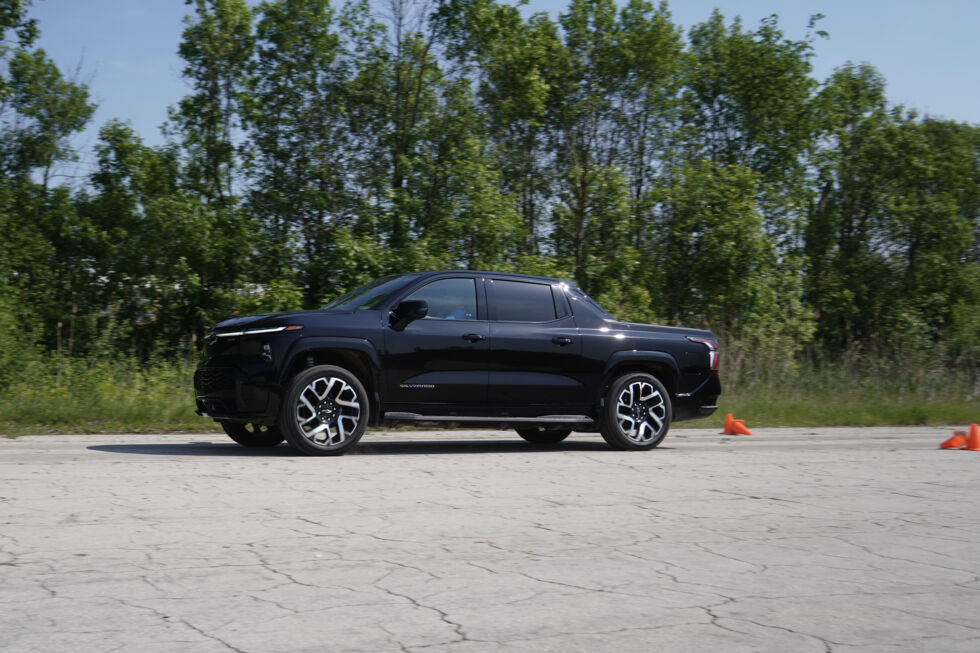
Enlarge / Chevy set up an impromptu drag strip so we could test the Silverado’s launch.
Michael Teo Van Runkle
The Silverado EV’s range sets it far ahead of the Lightning (at 240 miles or 386 km), though Rivian and Tesla do better. Various levels of home-charging setups help to make the large battery pack more attractive, and though I never needed nor got a chance to charge, expect GM’s claimed 350 kW max charging speed to similarly hold up. As usual, charging stations will likely throttle that speed back more regularly than the truck itself, which should manage a 10–80 percent charge time of around 40 minutes in ideal circumstances.
In the end, although it’s not quite as cartoonishly large and simultaneously far more practical than the Hummer EV, the Silverado uses 205 kilowatt-hours worth of lithium and other rare earth metals, contributing mightily to the RST weighing well north of 9,000 pounds. Yes, the truck combines the best utility of any EV on the market, with solid tech and range to attract stubborn EV holdouts. But how many hybrids could Chevy have built using so much battery? Until pricing drops lower than this truck’s $94,500 sticker, the Silverado RST ends up as a reminder of the diminishing returns, environmentally and economically, of building what customers, unfortunately, believe is necessary using today’s technology, which likely still needs to take another major leap forward to make such a truck more feasible for widespread adoption.
The 2024 Chevrolet Silverado EV’s great range comes at a high cost Read More »
